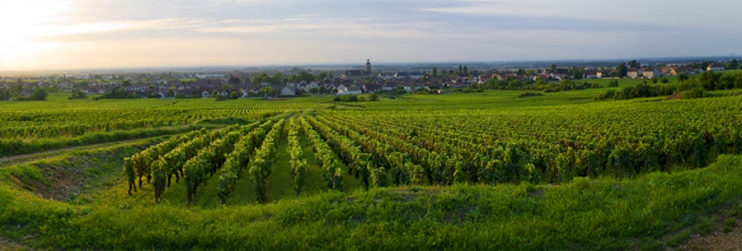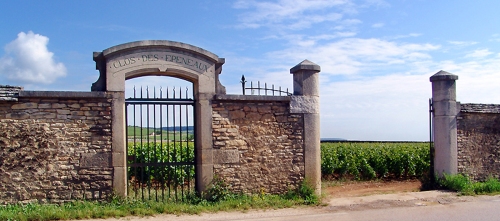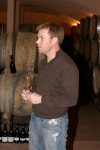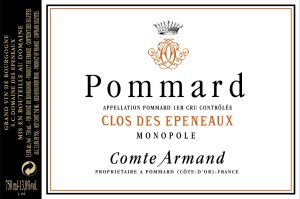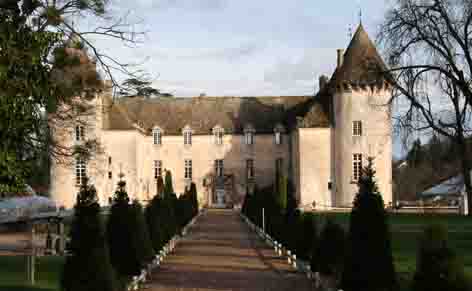The seemingly inexorable price escalation of fine Burgundy, especially when combined with the alarming fall in yields inflicted by recent climatic misfortune, has prompted at least one salutary consequence. Those of us infatuated by Pinot Noir as expressed in the Côte d’Or – that is, Red Burgundy – have been motivated to re-examine our preferences and prejudices and to evaluate anew lesser regarded appellations that may likewise offer the enchantment of fine Red Burgundy.
For many, this process is another reminder that, whatever our conceits to the contrary, our penchant for certain appellations is to some extent a function of fashion. For example, the allure of Vosne-Romanée and Chambolle-Musigny is evident and fully justified; but there are démodé appellations — Corton and Volnay come immediately to mind – that can offer equally compelling if somewhat different takes on Pinot Noir.
One such appellation that has been receiving considerable new focus is Marsannay-la-Côte, the northernmost and most recent (1987) AC in the Côte-de-Nuits. Although Marsannay today enjoys only “secondary” prestige within the Côte d’Or, this was not always the case. The wines of the Clos du Roy vineyard were appropriated by Royal Decree for the tables of Louis XIV and XVI; and several climats enjoyed the equivalent of Grand Cru status well into the nineteenth century. During the Belle Epoque, Marsannay became the dernier cri in Paris cafés. In 1919, Joseph Clair (Dom. Clair-Daü) originated Marsannay Rosé and it was quickly adopted by the smart set in Dijon society.
Indeed, Marsannay (and especially the rosé) was in such high demand in adjacent Dijon, that vignerons sold all their wine locally and enjoyed singular prosperity during the Roaring Twenties (or, as the French say, Les Années Folles). Their success was such that Marsannay proponents perceived little benefit in promoting their wines during formation of the Appellation system in the early 1930s, and Marsannay was accordingly not included as an AC. When the fashion faded, and as the French economy descended into the abyss of the approaching war, Marsannay went into full eclipse.
The village of Marsannay was founded in the Fourth Century as Marceniacum, in recognition of a Gallo-Roman named Marcenus, the seigneur of a large villa in the area. Marceniacum in Monte became Marsannay en Montagne and finally Marsannay-la-Côte. In 644 AD, the Duke of Amalgaire bequeathed the vineyards of Marsannay to the monks of the Abbot of Béze. According to local lore, commemorated by Phillip the Good in 1443, Charlemagne himself stopped and rested beside a fountain under a tree in Marsannay.
The Marsannay Appellation comprises 228 hectares of vineyards in the communes of Marsannay-la-Côte, Couchey and Chenôve. There are 65 climats within the appellation, of which around 20 produce palpably more distinguished wine. Not surprisingly, however, the application for Premier Cru designations is mired in politics. The most distinguished lieux-dits, and therefore the ones justifiably anticipating premier cru status, include Clos du Roy, Longeroies, Les Grasses Têtes, and La Charmes au Prêtres (depicted in Pitiot as Les Rosey).
The slopes of Marsannay rise gently from 260m to 320m, mostly facing eastwards over a base of Bathonian or Bajocian limestone. The topsoil is a dark brown mixture of marl, clay, limestone scree, Aeolian sediment and pebbles.
Uniquely, Marsannay produces red, white and rosé wines of disntinction, Marsannay being the only Appellation in the entire Côte d’Or entitled to AOC status for its rosé wine. Clive Coates has observed that Pinot Noir produces perhaps the best rosé wine of all; and Marsannay is the most celebrated rosé in Burgundy.
At its best, Marsannay rouge is rich, intense and robust, powefully textured with firm tannins, tending to exhibit dark berry and supple plum flavors, and boasting an appealingly persistent finish. Marsannay blanc, at its best, is round and balanced, with good concentration of melon and peach, slight mineral inflexion, with seductive vibrancy and a surprisingly long finish. Marsannay Rosé exhibits great energy and charm, with understated notes of strawberry and raspberry, wisps of lavender, with captivating vitality and a long, liminous finish. Excellent examples of Marsannay can be sourced from Sylvain Pataille, Camille Giroud and Bruno Clair.
